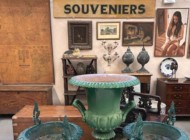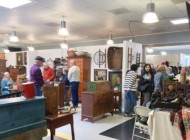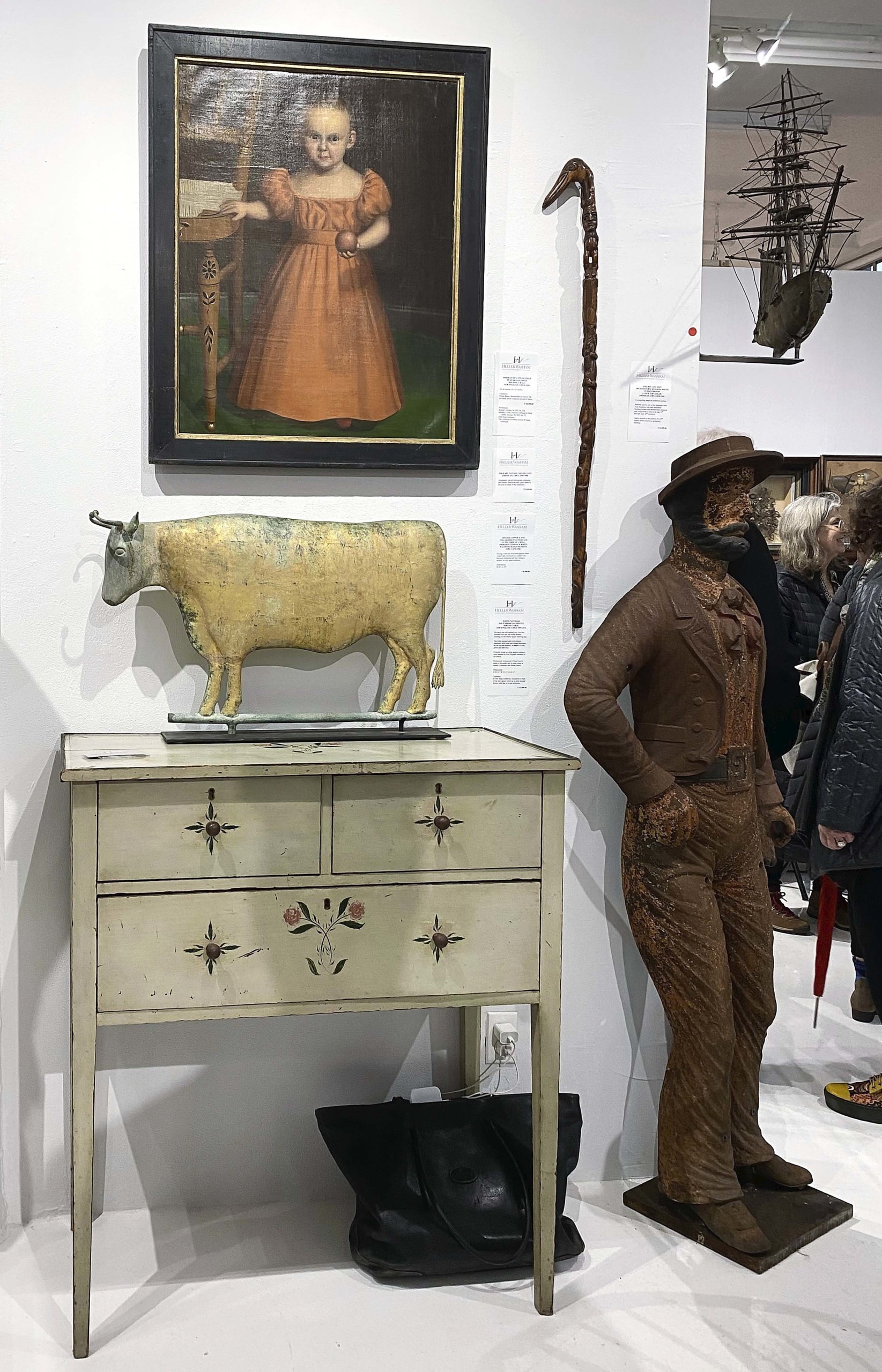
Veteran dealer Don Heller combined old school with young blood at Nameless; clockwise, circa 1820 child’s portrait, an 1850-1900 carved “fantasy” cane, a copper and zinc bull weathervane circa 1870-90, and a sold “Jack Tar” building mount cast between 1850 and 1890. Heller Washam Antiques, Portland, Maine.
Review & Photos by Z.G. Burnett
NEW YORK CITY — Take the subway to Hudson Yards, stroll down The High Line until you come to the second staircase, walk up the ramp on a building to the right, take the double-doored elevators that make you feel like you’re in a Twentieth Century indie film up to the third floor, and there you would find the Nameless Art + Design Show, which took place January 31-February 2. Far from the frosty reception one might expect from this neighborhood’s galleries, the welcoming spirit and camaraderie among guests and dealers was felt from the hallway. Just make sure to buy tickets in advance; like last year, tickets sold out within the weekend.
“The spirit of the show is accessibility,” said showrunner Adam Irish, of Warren, R.I. “We sold even more tickets with a slightly increased capacity and hourly entry times.”
One of Irish’s goals with Nameless is to attract a more diverse demographic of collectors: specifically younger buyers interested in learning about the objects and establishing their own concentrations. Irish, who also manages the Threadbare show during Brimfield week, has seen increasing “cross-pollination” between vintage clothing dealers and folk art specialists in the past few years. For this installment of Nameless, he reported that about 60 percent of guests were younger than 40, and many of these were comfortable spending on median to high-priced items. There were even some five-figure sales, a new milestone for the show. Yet, the point of Nameless is not to set record prices, but to provide a platform for dealers and inventory that would normally not be included in any other Chelsea gallery.
“Reese Truesdale [of Hare and Arrow, Kansas City, Mo.] had a spotlight that was made from a tin can,” Irish cited as an example. “It was made out of necessity, not to be art or an antique later on. This is where objects like that find a home.”

This carved limestone head was one of the few objects left in the booth of Hare and Arrow, Kansas City, Mo.
Truesdale brought even more intriguing objects in his booth than the illuminated tin can, such as its centerpiece, an unsigned, limestone head. Or at least, it was the size and general shape of a head, sporting a cartoonishly carved face that looked like it was just punched in. Truesdale found it at a Kansas estate sale but knew nothing else about its maker or origins. Of Nameless, he later said, “I keep meeting great people and good buyers at this show… I like that [it’s] a form of expression to a receptive audience.” Hare and Arrow sold most of its small goods over the weekend but is still looking for somewhere to rest its head.
Dennis Robida, Essex, Conn., brought another carved stone portrait, but with a history that prompted more questions than answers. An early American statue of a man in formal Eighteenth Century clothing, minus a hat, stood at three-fourths height in his booth. Carved in the round, its artist had a deft hand and a keen eye for detail, as seen in the delicate folds of his coat and distinct, separate fingers. This attention is all the more remarkable, as Robida believes the statue to be a representation of an enslaved Black man, possibly a memorial. Though Connecticut passed an act of “Gradual Abolition” in 1784, forced servitude continued until 1848, when it was the last state in New England to completely abolish the practice. Robida conservatively dated the statute between 1760 and 1800. If not original to the state, it would likely have been made in the American South, adding another mysterious possibility to this figure’s history.
Virginia Woolf said that “Anonymous was a woman,” and the goods presented at Nameless emphasize that “Anonymous” was also anyone besides a heterosexual white man. Cathy McLaurin and John Osoiro-Buck of Labor and Glean, Danville, N.H., specialize in pieces from the American South that are assumed or purported to be made by Black artists and craftspeople. Approximate provenance is often determined by the location where they’re found, and the stories that come with some of the objects. One of Labor and Glean’s most striking objects was a two-tier side table, painted black and decorated throughout in red and white, with dots and branch motifs on the sides. Its top surface showed a large tree with an owl and larger bird at its roots. McLaurin shared that the table was found in North Carolina but came from Alabama; it found a new home by the end of the show.
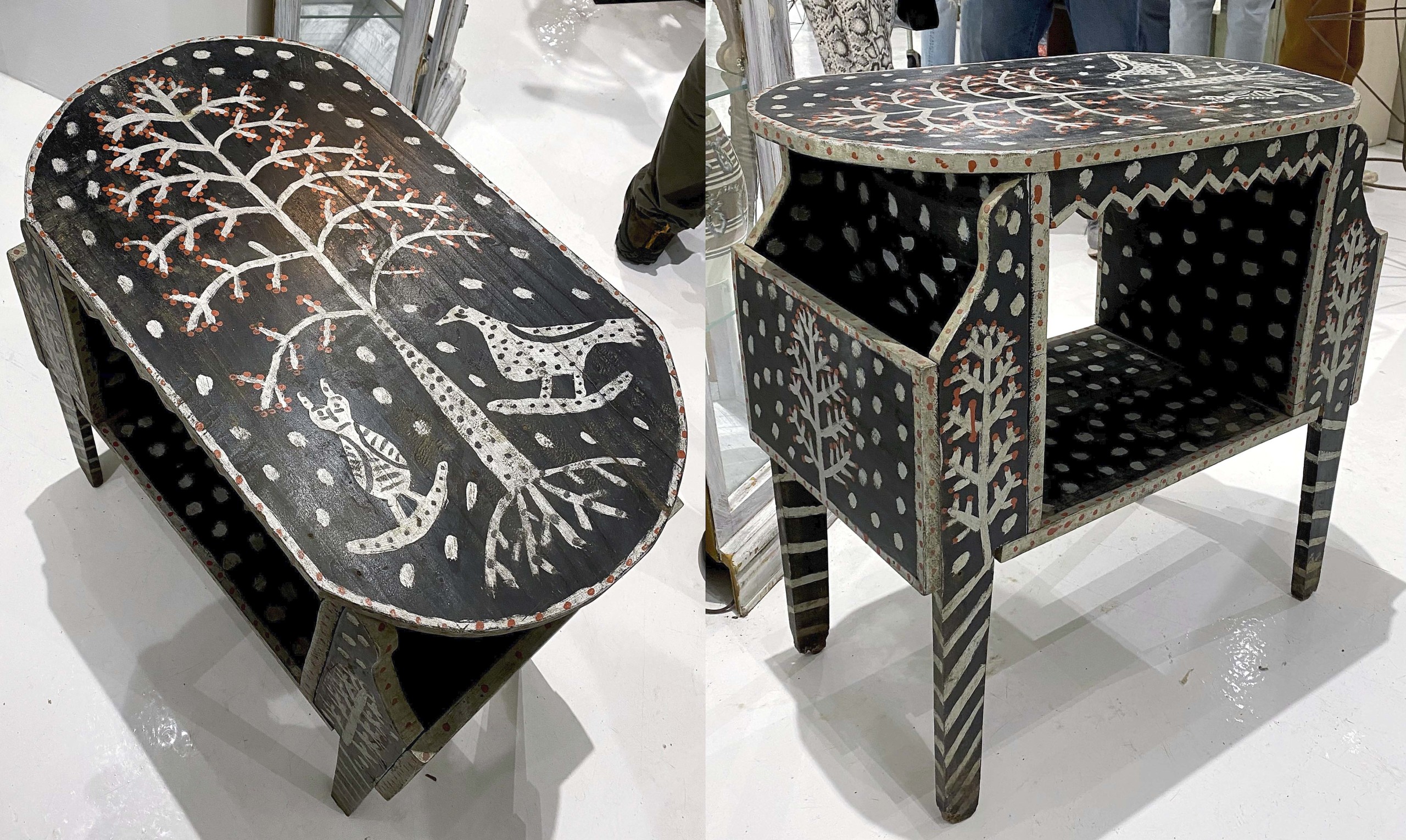
Probably made in Alabama and found in North Carolina, this well-preserved table was likely decorated by a Black artist in the early Twentieth Century. Labor and Glean, Danville, N.H.
Yet an unknown maker does not necessarily a Nameless-worthy object make. Evan M. Grant, Bremen, Maine, brought one such item that became the subject of administrative scrutiny. Sitting atop a Mid Century rustic bench was a red Nineteenth Century box, inscribed with “Portraits” in black paint on one side, that likely belonged to an itinerant artist. According to Irish, this made it an intentionally created, “found” art object, rather than an object that became art through its context and function. Bremen almost had to pull the box from his booth, until revealing that the other side showed a black-painted bridge scene. With a new “folk” art designation, Bremen was permitted to present the work.
Grant Steinhauser of Spiral Haus, New York City, is best known for showing contemporary and abstract works of fine art, yet his booth at Nameless presented a wide range of decorative virtuosity. “This is a passion show for me,” he commented. “It’s such a blast.” Two large, colorful lithographic columns supported his display, double-sided and in excellent condition. Though printed by their maker, John Sherer, Cincinnati, Ohio, the columns’ purpose was undetermined. Grant thought they might have Masonic origins, yet they show none of the usual iconography. In this case, their mystery makes the columns just that more appealing.
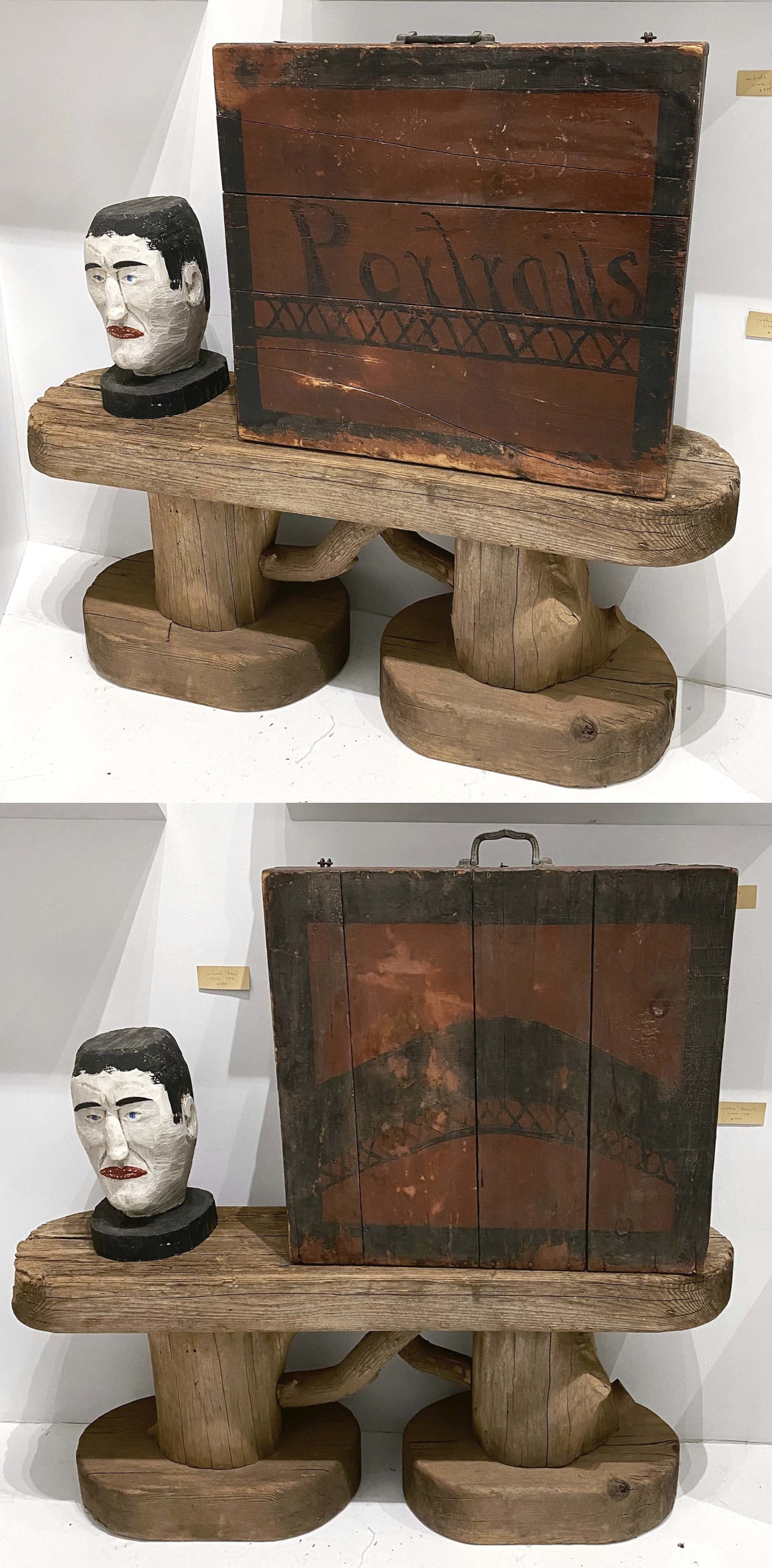
“[The columns] are a lot to bite off for many,” said Grant Steinhauser. With a known publisher but unknown intent, these double-sided lithographic columns were still available at the time of this report. Spiral Haus, New York City.
Nameless is also a home for outliers and oddities within an established medium or artistic practice. Susan Wechsler and South Road Antiques, Stanfordville, N.Y., brought a Nineteenth Century scene of a house, in its original frame, fresh from a private New York state collection. A common enough motif of embroidery known as Berlin work, developed early in that century using canvas patterns, this example was unusual in that its image was composed entirely of clear, tiny glass beads and deemed “finished” enough to be framed. Berlin work is typically made with colorful wool that covers the canvas, whereas this rendering creates almost a “negative” image better suited to early photography. Weschler did not know if this was a specific house portrait, but features such as the building extension and walkway, a single tree out front and a well in the upper left corner indicate that this was an original design. As with its show mates, this embroidery’s unknown past challenges the long-held notion that an artist’s name is of utmost importance to determine a work’s value, either monetarily or in comparison to its attributed peers.
The Nameless Art + Design Show opens annually at 516 West 26th Street and is now accepting applicants for 2026. For information, www.namelessartshow.com.

























